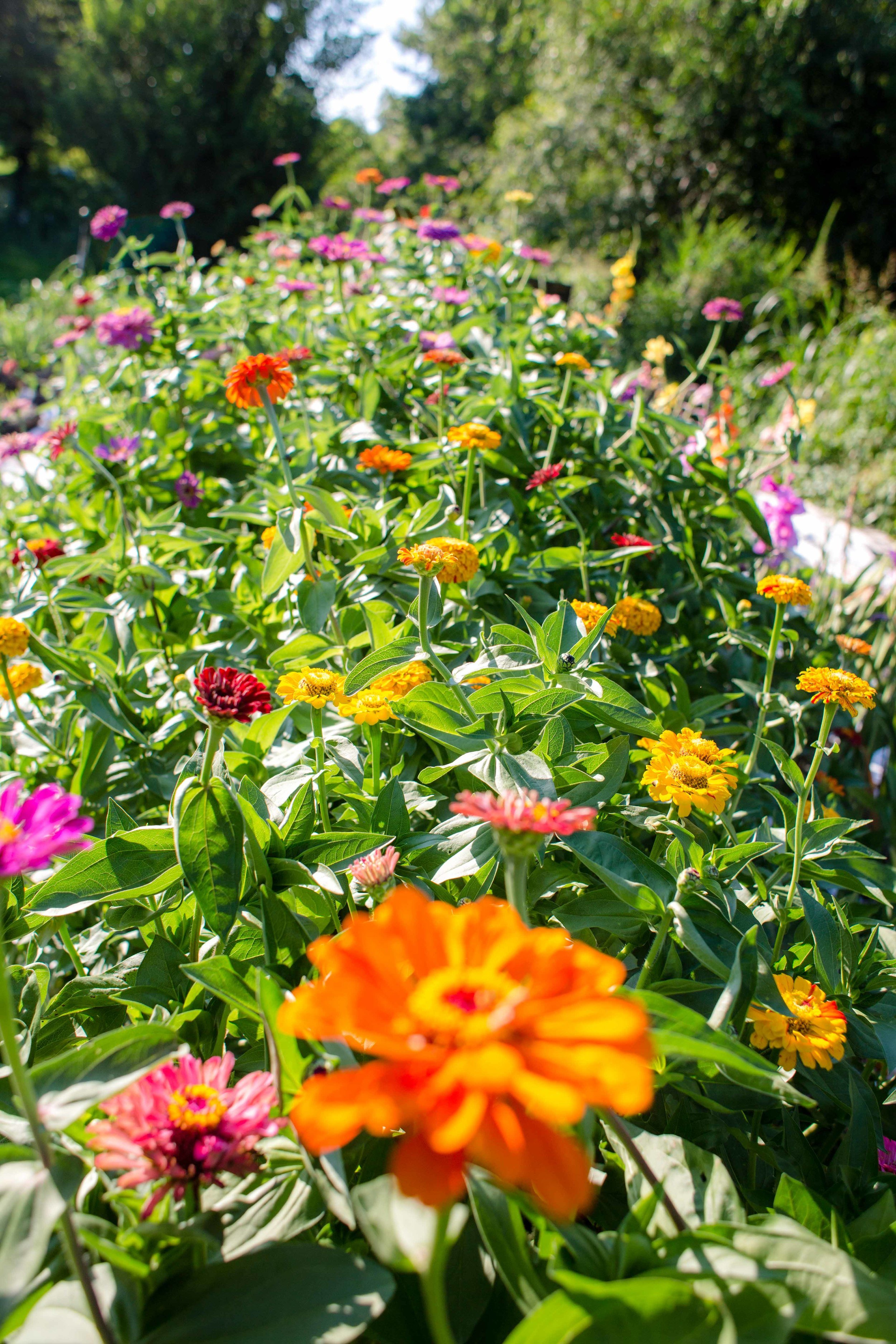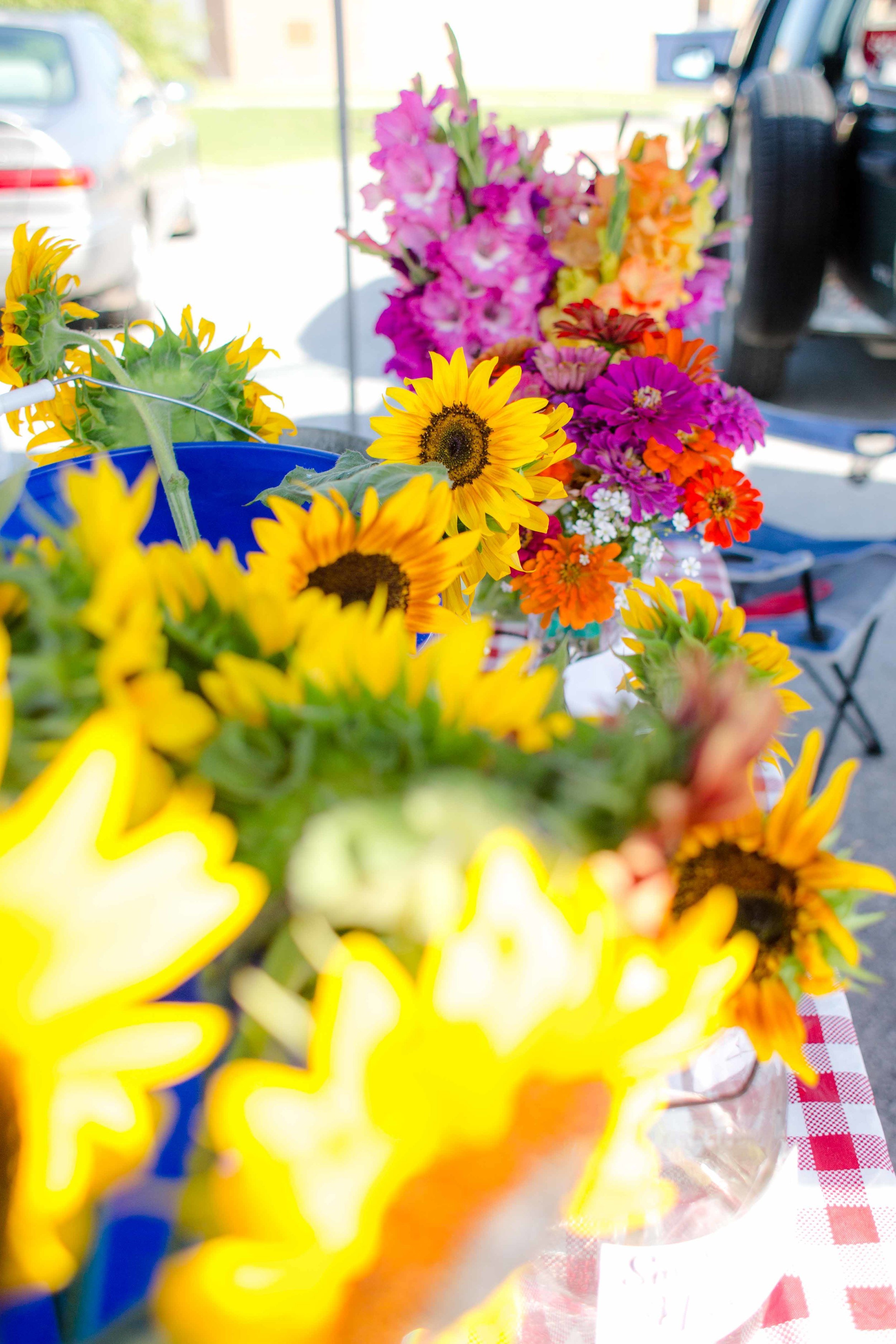Sunflower Farms
Kris Huckeba is a Pineville Elementary teacher who used to enjoy the leisurely summer vacations that come with the job by doing, well, not much. But that all changed when her husband gifted her with a particularly addictive new technology.
“My husband got me an iPad mini four years ago and we had a little tiny garden. I guess I was using it too much and he said, ‘I’m going to expand the garden because you need something to do,’” she said with a laugh.
That tiny garden turned into a half-acre lot bursting with corn, squash, peppers, green beans, cucumbers, tomatoes, melons, and more. Nearby is a young orchard stocked with blackberries, raspberries, gooseberries, boysenberries, apple, pear, nectarine, and white grapes and red grapes.
And flowers. Lots of flowers.
That tiny garden turned into a half-acre lot bursting with corn, squash, peppers, green beans, cucumbers, tomatoes, melons, and more. Nearby is a young orchard stocked with blackberries, raspberries, gooseberries, boysenberries, apple, pear, nectarine, and white grapes and red grapes.
“I have a vision of retiring from education in five more school years and being fully prepared to continue with the growing. I want to lean towards flowers. But I have to find the people that need them.”
That search is a still-evolving process of trial and error.
“Sunflowers are big. Zinnias are not. And people rave and rave and rave and rave about how beautiful my gladiolus are but they just keep walking by.”
At a glance, cut flowers sometimes get a bad rap for frivolity. But at just $5 a pop for 5-7 gladiolus or a generous bouquet of zinnias, her arrangements are a frugal luxury. If flowers feel like a self-indulgent splurge, they’re at least an economical way to brighten your mood. According to one Rutgers study, 100 percent of women given flowers broke into a genuine smile, compared to 90 percent for fruit baskets and 77 percent for candles.
For the environmentally conscious, it’s also worth noting that the non-seasonal blooms typically offered in supermarkets leave a tremendous carbon footprint compared to those raised and harvested locally.
Kris, a Southern California native accustomed to the popularity of cut flowers back home, is learning as-she-goes with bouquet arrangements in an attempt to reach a customer base that she knows exists and is growing.
“I think it’s a cultural thing. You’re either a person that embraces them or you aren’t. I just don’t think the fresh flower market is that big out here—but it’s growing. It is moving into the area because the farmers markets are becoming bigger and the vendors are pushing flowers. I want to be one of the people that’s doing that. If I’m going to work this hard, I want to enjoy what I’m growing. And I much more appreciate the beauty of the flowers.”
Her appreciation for blooms goes beyond the cheery face of a sunflower or the long-necked grace of a gladiola.
“It’s the way that I see God on earth. I don’t worship Mother Earth or anything like that, but it makes me believe that there’s a Creator because I just have a hard time believing that the flowers would get together and say, ‘Let’s do the Fibonacci together.’”
The Fibonacci sequence is commonly known as “the Golden Ratio” or “nature’s numbering system” and refers to the mathematical patterns and sequences of living organisms. Flower petals, seed heads, sea shells, spiral galaxies, hurricanes, DNA molecules, and even human limbs and our inner ears follow the Fibonacci sequence.
Next time you’re considering that farm-fresh bouquet, remember that they’re not just something pretty to put on your dining table, but a universal reminder of the shared language of, well, everything. Flowers have a noble agenda. Surely that’s worth $5.








